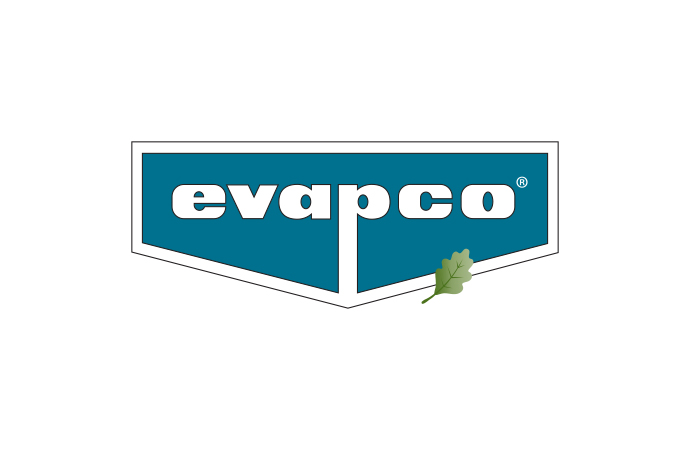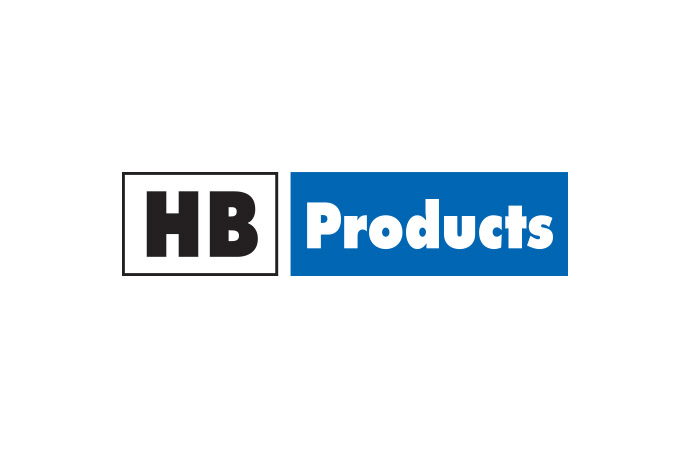ammonia21.com talked to Ruud van Berkel, Manager Procurement & Projects, to get insights of a cold store operator on the main considerations in choosing the refrigerant for new-built facilities, as well as for the retrofit of existing systems. The operator expects a trend towards using smarter machinery controls and electrical components and yearns for harmonised rules for the installation of ammonia plants across Europe.

ammonia21.com: You company - Norbert Dentressangle - holds 3,300,000 m3 of cold storage volume in Europe, namely in the Netherlands, Belgium, France, and the UK. How many of these cold stores use ammonia?
Ruud van Berkel: The majority of cold stores within Norbert Dentressangle is equipped with ammonia pump systems. In France, however, due to the ammonia deterring policy by the authorities, we are forced to use other refrigerants or solutions such as cascade or secondary systems with the consequence of higher energy consumption.
ammonia21.com: How do you evaluate ammonia as refrigerant solution? Where do you see the three major advantages and the three major disadvantages in using ammonia instead of HFCs?
van Berkel: The major advantages of ammonia in my opinion are:
ammonia21.com: What have been the major trends in ammonia refrigeration technology for cold stores in the last few years? How do you see it evolving over the next 10 years?
van Berkel: The trend is to minimise the quantity of ammonia in a system and thus towards using ammonia/CO2 cascade systems.
I do not expect for the next ten years a lot of changes on the ammonia side, but rather that the PLC (Programmable Logic Controller) control systems for the refrigeration plants will be smarter and the electrical components such as motors and frequency controllers will be more energy friendly.
ammonia21.com: Does Norbert Dentressangle operate any facilities with R22 that would soon need to be replaced? If yes, what will be the points of consideration in choosing the refrigerant for new-built facilities as well as for the retrofit of existing systems?
van Berkel: Yes, we still have some R22 facilities in France but the points of consideration for existing facilities are different than for new-built facilities.
For an existing facility, main considerations include the expected remaining life time of the facility, the possibility to retrofit a system and also the cost of that. The main problem is that we know, in advance, that the result of a retrofit of a R22 system will be higher energy consumption.
For a new-built facility ammonia will be the most acceptable refrigerant for us but if we are not able to get the permit for using an ammonia pump system, a cascade system of ammonia/CO2 will be considered.
A retrofit from R22 to ammonia is hardly possible due to the copper components and lines in the R22 installation. In my opinion, it is not an option for a facility that is in operation, therefore, you will be forced to install a new ammonia system and of course if there are components in the existing R22 installation suitable to work with ammonia, these can also be used in the new system.
ammonia21.com: Which markets would you judge favourable to natural refrigerants, especially ammonia, in industrial refrigeration and why?
van Berkel: The first cost of an ammonia system is relatively higher to other refrigerant systems, therefore, I expect ammonia to be favourable in the bigger cold stores. The initial investment will be higher and that is partly driven by the strict regulations, but that makes also the system more reliable. The higher investments will be paid back by less energy consumption and reliability of the system.
ammonia21.com: Do you see strong differences in the refrigeration technologies that cold store facilities use depending on the country and national safety regulations? For example, is the use of cascade or secondary systems more popular in some particular markets?
van Berkel: Yes for sure. For example In France if the ammonia quantity in the system exceeds the 50 kg the extra requirements of the France legislation for ammonia makes it almost impossible to install such a system. Also the time needed to get finally the permit for a system with an ammonia charge of more than 50 kg is unacceptably long. More than a year is no exception. Therefore, in France the cascade or secondary systems are more popular, but as a general rule less energy friendly.
ammonia21.com: What regulations would need to be changed in order to facilitate the use of ammonia? Can you name one national policy particularly favourable to the use of ammonia as refrigerant and one national policy particularly unfavourable?
van Berkel: Factors such as less energy consumption, no ODP and low-GWP should be favoured by national policies, though I have not encountered this in any national policy. To be honest, I have not found any national policy that gives favourable regulations for ammonia.
Unfavourable national policies reflect a fear for ammonia. Of course ammonia is toxic and hence very careful consideration must be given to the design and maintenance of the system. But if you know the risks and how to handle them, the risk is in my opinion limited.
ammonia21.com: What kind of EU policy making would you need to facilitate green practices and a broader uptake of natural refrigerants in the cold store sector?
van Berkel: Since there is hardly any knowledge on the advantages of natural refrigerants, neither at the national nor EU level, lobbying efforts should be started to support decision makers in making the right decisions on this topic. Regarding ammonia, the main goal should be that the rules for the installation of an ammonia refrigeration plant are in each and every country within the EU the same.
ammonia21.com: Do you believe that an HFC phase-out in cold store refrigeration would be feasible in Europe?
van Berkel: I would not really expect a phase-out of HFCs, but maybe rather a rule capping the maximum quantity of HFCs in a system in the future. As of whether it is feasible, I have to say yes, given the experience of the R22 phase-out.
Ruud van Berkel: The majority of cold stores within Norbert Dentressangle is equipped with ammonia pump systems. In France, however, due to the ammonia deterring policy by the authorities, we are forced to use other refrigerants or solutions such as cascade or secondary systems with the consequence of higher energy consumption.
ammonia21.com: How do you evaluate ammonia as refrigerant solution? Where do you see the three major advantages and the three major disadvantages in using ammonia instead of HFCs?
van Berkel: The major advantages of ammonia in my opinion are:
- Highly efficient natural refrigerant
- No ozone depletion potential (ODP=0)
- No global warming potential (GWP=0)
- Easily detectable
ammonia21.com: What have been the major trends in ammonia refrigeration technology for cold stores in the last few years? How do you see it evolving over the next 10 years?
van Berkel: The trend is to minimise the quantity of ammonia in a system and thus towards using ammonia/CO2 cascade systems.
I do not expect for the next ten years a lot of changes on the ammonia side, but rather that the PLC (Programmable Logic Controller) control systems for the refrigeration plants will be smarter and the electrical components such as motors and frequency controllers will be more energy friendly.
ammonia21.com: Does Norbert Dentressangle operate any facilities with R22 that would soon need to be replaced? If yes, what will be the points of consideration in choosing the refrigerant for new-built facilities as well as for the retrofit of existing systems?
van Berkel: Yes, we still have some R22 facilities in France but the points of consideration for existing facilities are different than for new-built facilities.
For an existing facility, main considerations include the expected remaining life time of the facility, the possibility to retrofit a system and also the cost of that. The main problem is that we know, in advance, that the result of a retrofit of a R22 system will be higher energy consumption.
For a new-built facility ammonia will be the most acceptable refrigerant for us but if we are not able to get the permit for using an ammonia pump system, a cascade system of ammonia/CO2 will be considered.
A retrofit from R22 to ammonia is hardly possible due to the copper components and lines in the R22 installation. In my opinion, it is not an option for a facility that is in operation, therefore, you will be forced to install a new ammonia system and of course if there are components in the existing R22 installation suitable to work with ammonia, these can also be used in the new system.
ammonia21.com: Which markets would you judge favourable to natural refrigerants, especially ammonia, in industrial refrigeration and why?
van Berkel: The first cost of an ammonia system is relatively higher to other refrigerant systems, therefore, I expect ammonia to be favourable in the bigger cold stores. The initial investment will be higher and that is partly driven by the strict regulations, but that makes also the system more reliable. The higher investments will be paid back by less energy consumption and reliability of the system.
ammonia21.com: Do you see strong differences in the refrigeration technologies that cold store facilities use depending on the country and national safety regulations? For example, is the use of cascade or secondary systems more popular in some particular markets?
van Berkel: Yes for sure. For example In France if the ammonia quantity in the system exceeds the 50 kg the extra requirements of the France legislation for ammonia makes it almost impossible to install such a system. Also the time needed to get finally the permit for a system with an ammonia charge of more than 50 kg is unacceptably long. More than a year is no exception. Therefore, in France the cascade or secondary systems are more popular, but as a general rule less energy friendly.
ammonia21.com: What regulations would need to be changed in order to facilitate the use of ammonia? Can you name one national policy particularly favourable to the use of ammonia as refrigerant and one national policy particularly unfavourable?
van Berkel: Factors such as less energy consumption, no ODP and low-GWP should be favoured by national policies, though I have not encountered this in any national policy. To be honest, I have not found any national policy that gives favourable regulations for ammonia.
Unfavourable national policies reflect a fear for ammonia. Of course ammonia is toxic and hence very careful consideration must be given to the design and maintenance of the system. But if you know the risks and how to handle them, the risk is in my opinion limited.
ammonia21.com: What kind of EU policy making would you need to facilitate green practices and a broader uptake of natural refrigerants in the cold store sector?
van Berkel: Since there is hardly any knowledge on the advantages of natural refrigerants, neither at the national nor EU level, lobbying efforts should be started to support decision makers in making the right decisions on this topic. Regarding ammonia, the main goal should be that the rules for the installation of an ammonia refrigeration plant are in each and every country within the EU the same.
ammonia21.com: Do you believe that an HFC phase-out in cold store refrigeration would be feasible in Europe?
van Berkel: I would not really expect a phase-out of HFCs, but maybe rather a rule capping the maximum quantity of HFCs in a system in the future. As of whether it is feasible, I have to say yes, given the experience of the R22 phase-out.
MORE INFORMATION
Related stories

_1475587414.png)















_1522327086.png)





